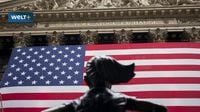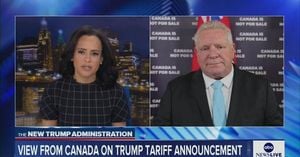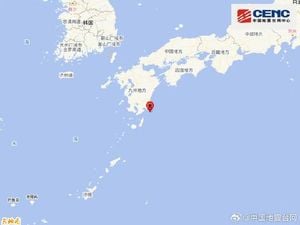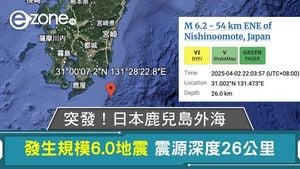On April 2, 2025, a Business Insider reader's investment portfolio was analyzed by Christian Röhl, Chief Economist at Scalable Capital. The analysis raised important questions about the portfolio's structure and its potential for growth. The reader, eager to build wealth through individual stocks and ETFs, provided their entire portfolio for scrutiny, and Röhl's insights revealed both strengths and weaknesses.
The portfolio is heavily concentrated in equities, which can be a double-edged sword. Röhl noted, "The portfolio is strongly focused on stocks. Depending on the investment background and personal preference, this can be sensible. Some diversification across asset classes occurs only implicitly—through the ARERO fund, which contains 25 percent bonds and 15 percent commodities." The ARERO fund comprises 18 percent of the overall portfolio, leading to a bond exposure of 4.5 percent and a commodity exposure of 2.7 percent.
In terms of geographical distribution, the portfolio primarily focuses on Europe and North America, while Asia and emerging markets are only covered through the ARERO fund and global ETFs. This raises concerns about the adequacy of diversification, especially given the current geopolitical climate. Röhl pointed out that both regions are weighted less than they would be in a purely passive investment strategy.
Sector-wise, there is a notable tilt towards technology, with thematic funds in New Energy, Robotics, IT, and AI+Big Data making up a third of the portfolio. Röhl commented, "Although the largest single investment—the ETF on Eurozone equities—has a relatively low technology share, the thematic funds are all tech-heavy. Financials and defensive sectors like consumer staples or healthcare are underrepresented."
Röhl identified a core/satellite strategy within the portfolio. The core consists of 60 percent: ARERO (18 percent), three global ETFs (11 percent), and the MSCI EMU ETF (31 percent). The satellites account for 40 percent, comprising thematic ETFs (35 percent) and individual stocks (5 percent). While this structure shows promise, Röhl cautioned that the reader should critically reflect on certain aspects.
One concern is the high weighting towards Europe, with over half of the core invested in that region. Röhl questioned whether this was a targeted investment choice or simply a case of home bias, especially in light of current political dynamics. Furthermore, two of the three global ETFs in the core are marketed as sustainable, prompting questions about the rationale behind this choice given the portfolio's lack of a consistent sustainability focus.
Meanwhile, market conditions are shifting, and investors are feeling the heat. The article published on the same day discussed the iShares MSCI World ETF, which has recently generated sell signals after breaking its upward trend channel and the critical 200-day moving average. This has led to heightened anxiety among investors, with many wondering if this signals an impending crash.
The iShares MSCI World ETF is the largest MSCI World ETF globally, and its recent performance has raised eyebrows. When the ETF last fell below the 200-day line in October 2023, it experienced a subsequent drop of 4 percent. In a more dramatic downturn from January to October 2022, it plummeted by 22 percent. The current market sentiment is fraught with uncertainty, driven by geopolitical tensions and erratic U.S. economic policies.
Investors are advised to remain calm amid the turmoil. The article suggests that those with a long-term investment horizon should consider riding out the correction, as dollar-cost averaging through ETF savings plans could yield more shares at a lower price. This strategy can prove advantageous in the long run, as the MSCI World ETF is expected to trend upward over time.
In light of the growing skepticism towards U.S. investments, many investors are reallocating their portfolios away from the MSCI World and U.S. ETFs. The erratic nature of U.S. foreign and economic policy has prompted a shift in focus towards more diversified options.
For those looking to invest globally without over-exposing themselves to the U.S. market, alternatives to the MSCI World Index are emerging. The article highlights three ETFs that offer better diversification and a more balanced geographical exposure:
First, the iShares MSCI ACWI UCITS ETF USD (Acc) tracks the MSCI All Country World Index, which includes both developed and emerging markets, reducing the U.S. share to approximately 63 percent. This fund, with a size of nearly 15.7 billion CHF, invests in over 2,300 companies worldwide and boasts a total expense ratio of 0.20 percent per year.
Another option is the Xtrackers MSCI World ex USA UCITS ETF 1C, which invests exclusively in companies outside the United States, with Japan holding the largest country weighting at around 19.7 percent. This ETF has a volume of approximately 1.3 billion CHF, is accumulating, and invests in over 790 positions, with a total expense ratio of 0.15 percent per year.
Lastly, the Vanguard FTSE All-World UCITS ETF (USD) Distributing combines both developed and emerging markets based on the FTSE All-World Index. It has a total volume of approximately 14.7 billion CHF and invests in over 3,600 values, with a total cost ratio of 0.22 percent per year and a distribution yield of 1.59 percent.
In conclusion, while the current market landscape presents challenges, investors are encouraged to reassess their strategies and consider diversified options that align with their long-term goals. The shifting dynamics of the market may provide opportunities for those willing to adapt.








